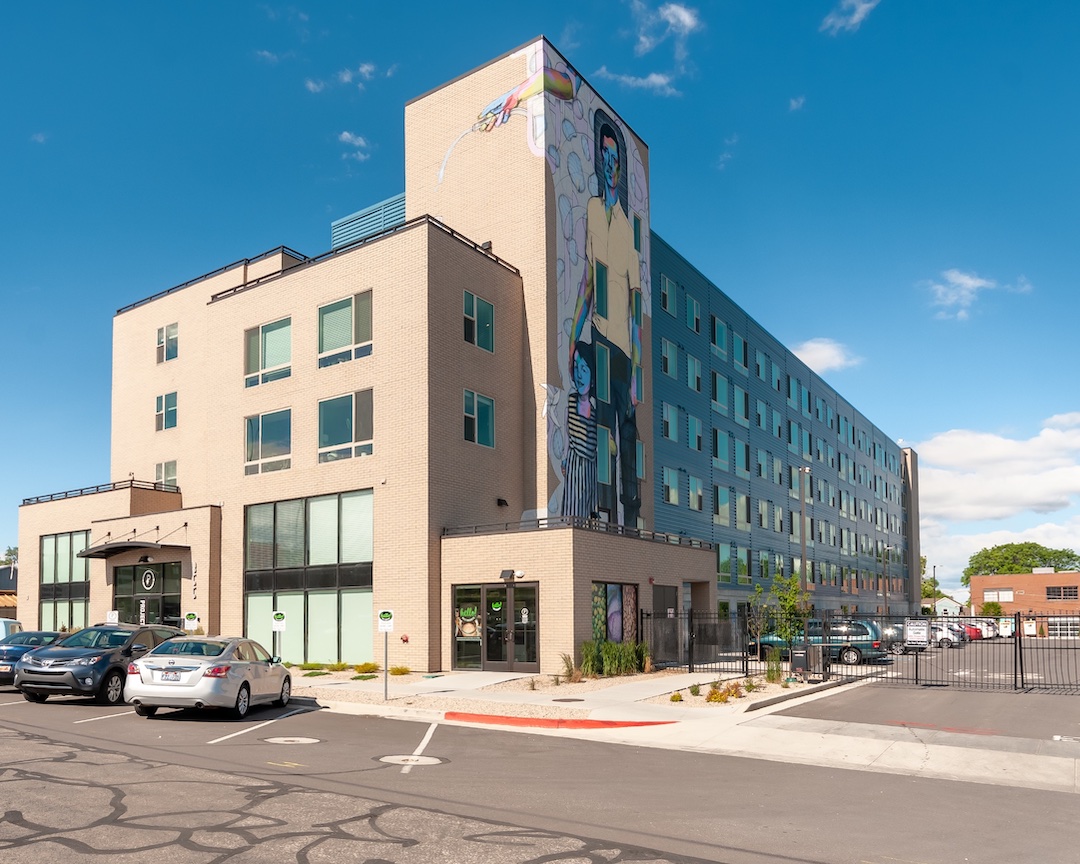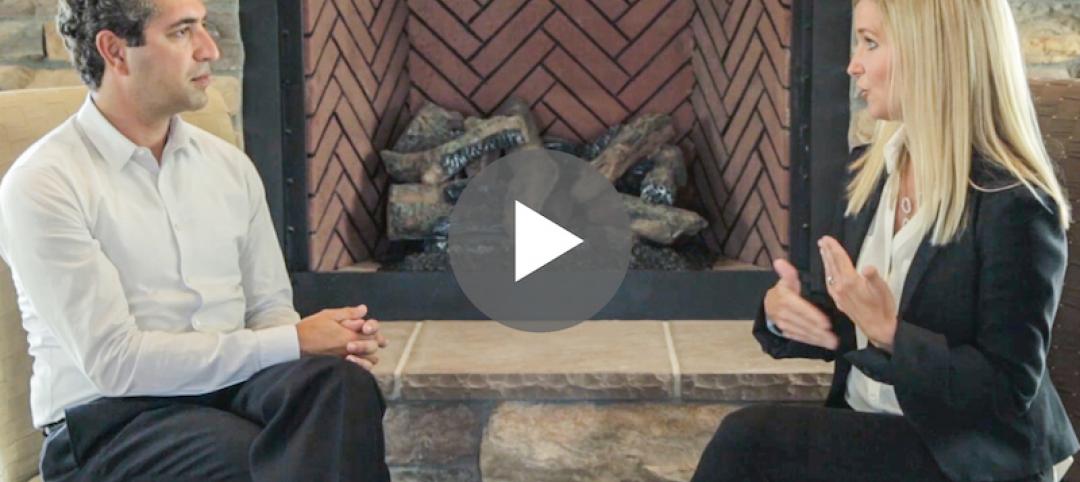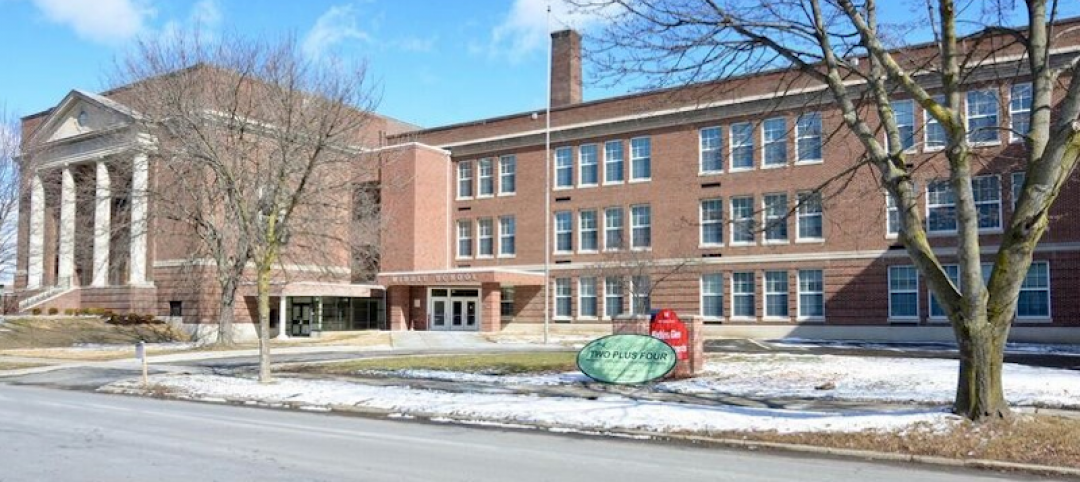The $16 million Project Open rental community of 112 one-bedroom units is the product of Giv Development, a Salt Lake City developer that specializes in mixed-income housing communities. Its not-for-profit arm explores new concepts for affordable, sustainable housing.
“We’re interested in developing a scalable net-zero model that will start to shift market dynamics and encourage developers to recognize that building this way is the economically intelligent thing to do,” said Giv Group Executive Director Chris Parker.
The all-electric building is located in the city’s Guadalupe neighborhood, an urban district on the front lines of gentrification. “We want the building to serve as a bulwark against the population being pushed out as property values continue to rise,” said Parker.
About 70% of Project Open’s units are set aside as affordable, some with rents as low as $375 a month. A historic furniture warehouse behind the building was converted into amenity spaces and 14 studio workspaces for rent by resident artists and entrepreneurs.
“I love what Giv is doing to make sure the neighborhood will remain affordable for people who have lived here for generations,” said tenant Valarie Williams. She moved into the building when it opened in January 2017 and also rents studio space for her part-time hand-lettering business. “The fact that it’s sustainable and also gives me a space in which to create was icing on a really great cake,” she said.
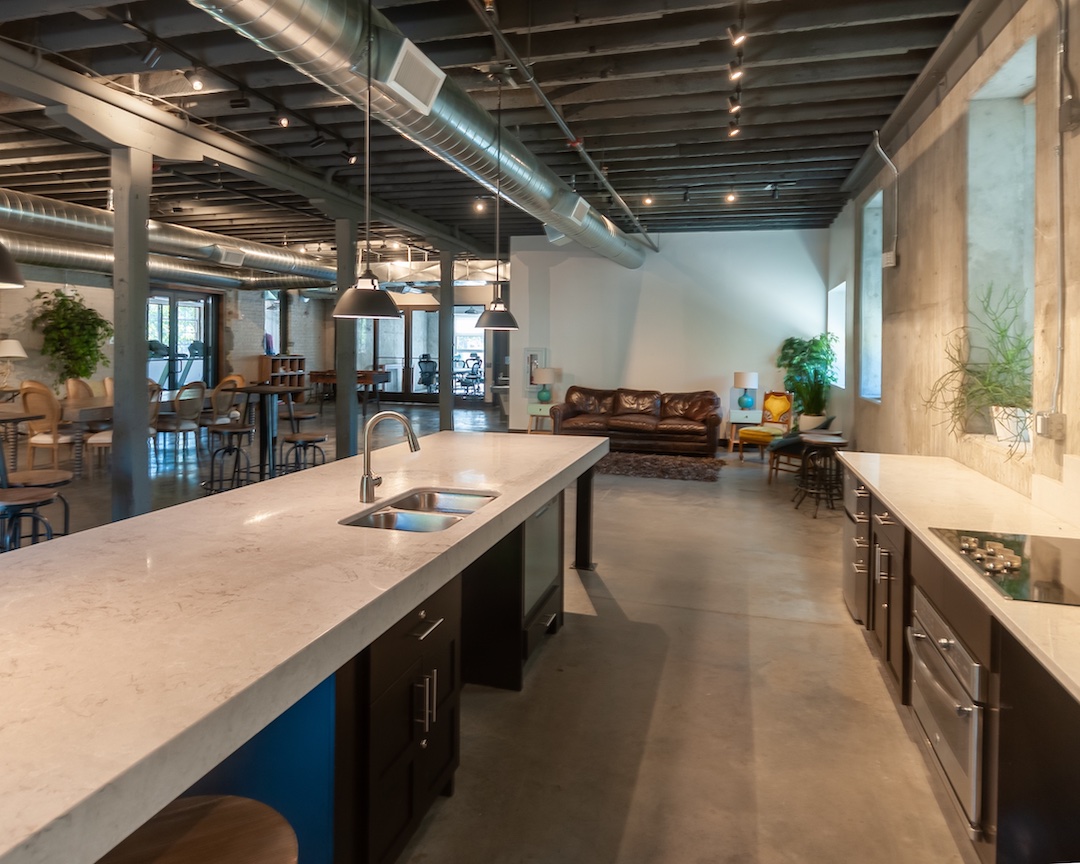 The clubhouse of Project Open resides in a historic furniture warehouse that Giv Development renovated into 14 affordable creative studios, a gym, and a conference room, in addition to the clubhouse. The reconstructed building is now another emission-free component of Giv’s Project Open complex. Photo: Brandon Hyatt Photography
The clubhouse of Project Open resides in a historic furniture warehouse that Giv Development renovated into 14 affordable creative studios, a gym, and a conference room, in addition to the clubhouse. The reconstructed building is now another emission-free component of Giv’s Project Open complex. Photo: Brandon Hyatt Photography
Goldman Sachs, Olene Walker Housing Loan Fund, and Utah Housing Corporation provided funding. Although no solar tax credits were issued, Rocky Mountain Power set up the solar program and provided transportation and energy-efficiency rebates.
Lowering carbon emissions is a high priority in Salt Lake City. Air quality is particularly poor during winter months, when prolonged inversions cause cold, stagnant air to settle in mountain basins and trap pollutants. The metro area ranked eighth nationally in so-called PM2.5 spikes, which measure small particulate matter pollutants, according to the American Lung Association’s 2019 “State of the Air” report.
Addressing the region’s air quality problems is “an issue that has to be taken up collectively or no one gets much benefit,” said Parker. “Utah’s population is expected to double in the next 30 years, so there’s a bit of urgency here.”
FINE-TUNING THE carbon neutral apartment APPROACH
Space limitations on the roof made it impossible to power the entire six-story building with rooftop PVs. Instead, residents purchase their electricity from Rocky Mountain Power’s Subscriber Solar program, via solar panels housed at a power facility in central Utah. “The program offers reliable solar production without any upfront capital costs, which provides a real market incentive to move to electrification,” said Parker.
Each residence is heated and cooled by an individual heat pump, but Giv also opted to install a supplemental resistance heating system to make sure residents can stay warm in Utah’s brutal winters. Tankless electric water heaters added to total energy demand, necessitating an upgrade to a 150-amp circuit breaker in each unit.
“It really caught us off guard how difficult and time-consuming it was going to be to route power to the units,” said Tyler Hollon, Business Development Specialist at general contractor Wadman Corporation. “We had to run six-gauge wires to each unit and didn’t really plan for enough room in the walls to make everything fit.”
Hollon anticipates all-electric buildings will become the local standard as technology advancements and construction ingenuity continue to make the project economics more appealing. “I wouldn’t be surprised if half the units will be built this way in two years,” said Hollon, whose firm is currently building about 1,200 carbon-neutral residential units throughout the Salt Lake City area.
Related content: Deluxe parking: A condo building in Philadelphia offers its owners a completely automated parking service
Project Open phase two, currently under construction and scheduled to open later this year, will offer a wider range of living options, from live/work studio apartments to four-bedroom units. The two-building complex will integrate high-efficiency mini-split heat pumps, hybrid heat pump water heaters, and no-backup resistance heating units to save energy. It will also incorporate more amenities that support a low-carbon lifestyle, such as an electric vehicle ride-share program, e-bikes, and a fresh food space to lessen the need for frequent trips to the grocery store.
A planned third phase, expected to break ground in 2020, will incorporate some condominium units.
Ultimately, Giv wants to provide local developers, contractors, and architects with real-world residential models that outperform conventional properties from an economic, environmental, and social equity standpoint. Project Open is creating a public website where it will share real-time data on each building’s energy use, construction costs, and the specific building systems and products that were used.
“We envision Project Open as an open source research tool for anyone—including us—to keep thinking about solving the challenges we currently have with the way we build,” said Parker.
PROJECT TEAM | PROJECT OPEN, PHASE ONE
DEVELOPER Giv Development
ARCHITECT Architecture Belgique
STRUCTURAL ENGINEER Canyons Structural
CIVIL ENGINEER Focus Engineering
MEP ENGINEER PVE
ENERGY CONSULTANT Provident Energy
GENERAL CONTRACTOR Wadman Corporation
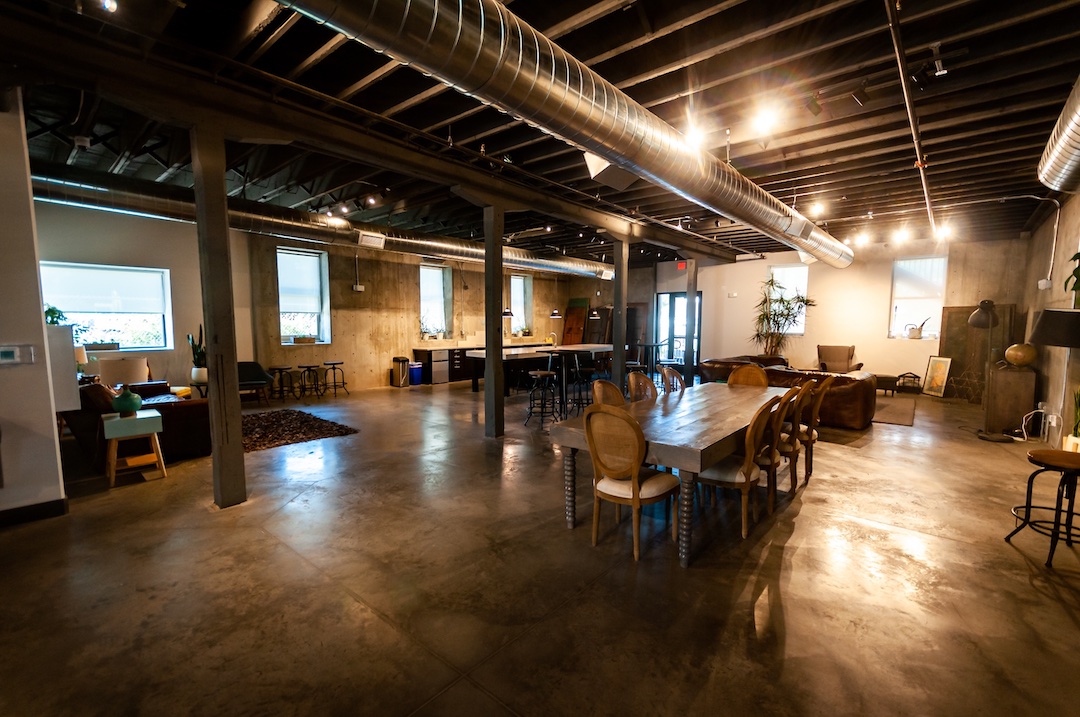 Photo: Brandon Hyatt Photography
Photo: Brandon Hyatt Photography
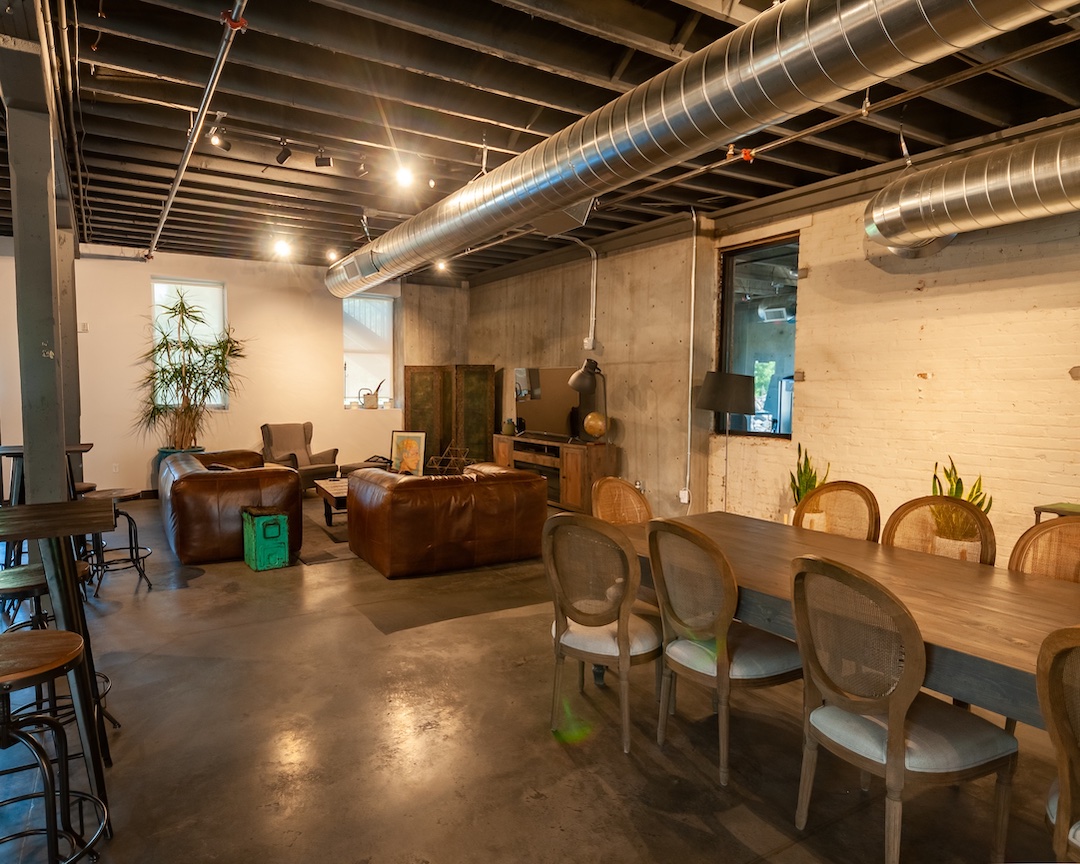 Photo: Brandon Hyatt Photography
Photo: Brandon Hyatt Photography
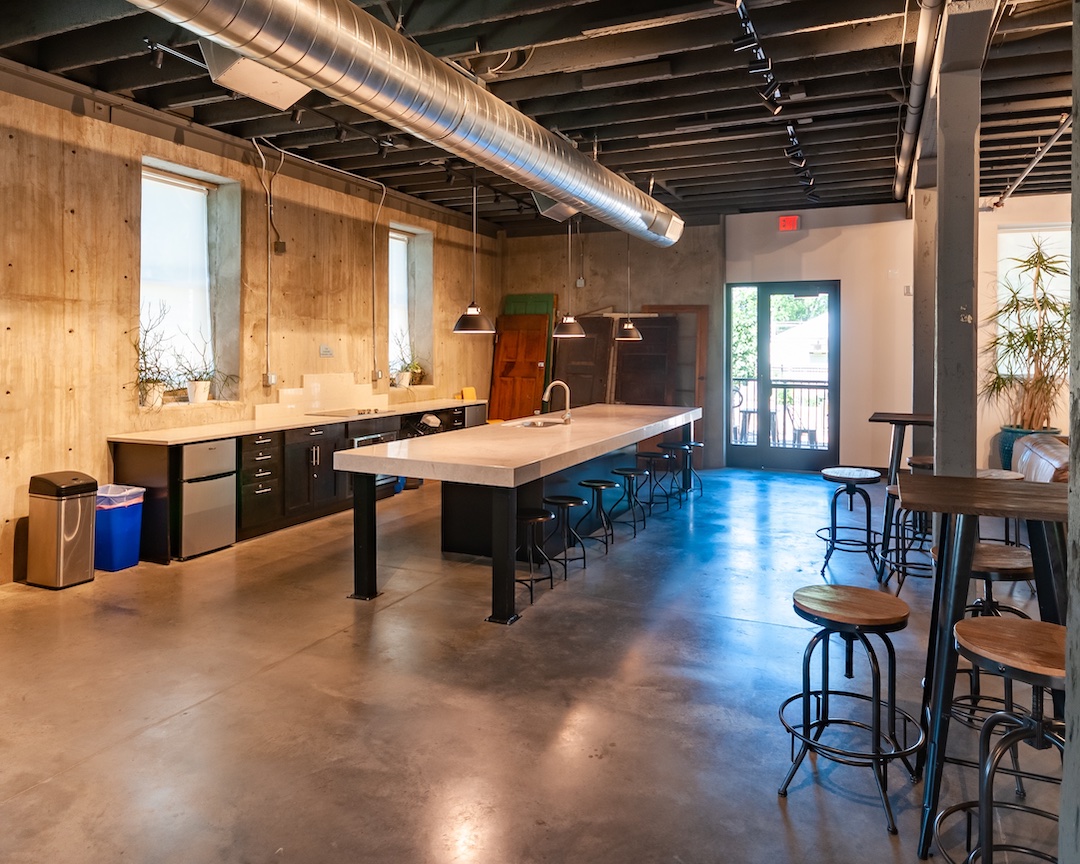 Photo: Brandon Hyatt Photography
Photo: Brandon Hyatt Photography
Related Stories
Multifamily Housing | Dec 22, 2016
Multifamily green financing programs grew rapidly in 2016
Multifamily green financing programs boomed in 2016, and are likely to continue to grow in 2017, according to the president of Partner Energy.
Market Data | Dec 21, 2016
Will housing adjust to an aging population?
New Joint Center report projects 66% increase in senior heads of households by 2035.
Multifamily Housing | Dec 15, 2016
Multifamily tower in St. Louis uses stacked design to make every apartment a corner unit
Designed by Studio Gang, the building’s stacked tiers will each comprise four floors and fan outwards as they rise up.
Multifamily Housing | Dec 12, 2016
BIG’s first residential condominium in the U.S. completed in Miami
Two 20-story twisting towers comprise 98 units on a three-acre site near Biscayne Bay.
Multifamily Housing | Dec 1, 2016
One of Canada’s largest media companies dives into real estate development
Rogers moves forward on M City, a multi-building, multi-year project in a Toronto suburb.
Multifamily Housing | Nov 28, 2016
Axiometrics predicts apartment deliveries will peak by mid 2017
New York is projected to lead the nation next year, thanks to construction delays in 2016
Sponsored | Multifamily Housing | Nov 11, 2016
Value engineering brings Santa Barbara apartments back on track
When framing estimates for a new apartment complex in Rialto, California, came in too high, a savvy developer decided to have the project value engineered. A switch to glulam and wood-framed shear walls got the project back in the black.
Adaptive Reuse | Nov 9, 2016
Middle school transformed into affordable housing for seniors
The project received $3.8 million in public financing in exchange for constructing units for residents earning less than 60 percent of the area’s median income.
Multifamily Housing | Oct 28, 2016
Aston Martin is making a foray into real estate in Miami
The British automaker will partner with G and G Business Developments on the waterfront project.
Multifamily Housing | Oct 25, 2016
The Beacon will become the most sustainable residential tower in the world
Lumiere Developments says the building will generate enough energy to offer residents ‘Free Energy For Life.’


